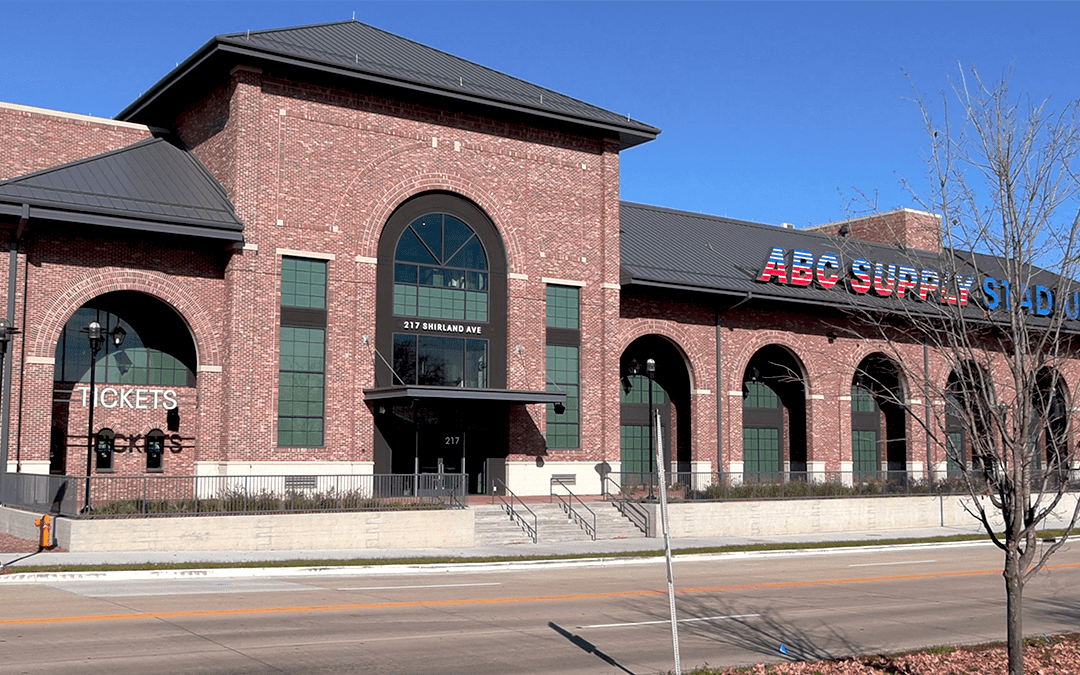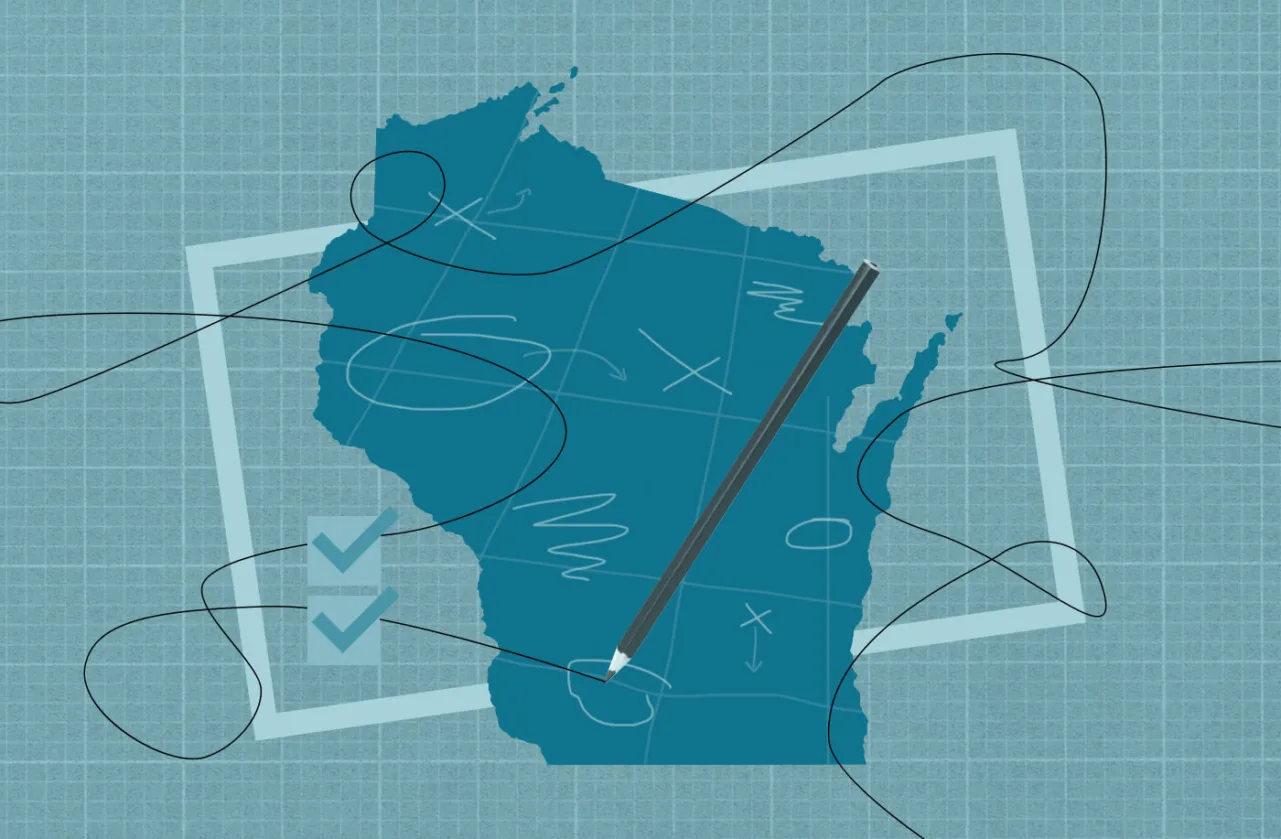
People’s Maps Commission examines how communities were broken up to make the 7th Congressional District more Republican.
To see the differences brought about by a Wisconsin redistricting process in 2011 that radically revamped the state’s election map to favor Republicans, Brain Ewert needs look no further than his hometown of Wausau.
Prior to redistricting a decade ago, Marshfield and most of surrounding Wood County were part of the same state Assembly and Senate districts. Voters of common areas decided which candidates would represent them in the state Legislature.
However, for the past decade Marshfield has been split into two Assembly districts, while Wood County was divided into four Assembly districts and three Senate seats. The area that once was considered a nearly even split between Democrats and Republicans, a region where Democrat Dave Obey represented the 7th Congressional District in the US House of Representatives for four decades, has for the past 10 years been represented by Republican candidates winning elections by wide margins.
“Look at what they did in Marshfield and in Wood County,” said Ewert, a Marshfield Clinic doctor who ran unsuccessfully as a Democrat in the 7th Congressional District primary in 2018. “Now one party has a distinct advantage over the other.” Ewert lost the primary race to Margaret Engebretson who lost to incumbent Sean Duffy by more than 20 points.
The result of gerrymandered maps established in secret by Republicans a decade ago results in far too many districts in which the winner of elections is a foregone conclusion, Ewert and other speakers said during a virtual public hearing of the People’s Maps Commission Thursday night. That, in turn, leads to candidates more beholden to following the wishes of political party bosses than to those of their constituents, speakers said.
Thursday’s maps commission meeting centered on the 7th Congressional District and was the fifth of eight scheduled to occur across the state, with the next set for Feb. 11. The People’s Maps Commission was appointed by Gov. Tony Evers to solicit public input and recommend a fair process for the redrawing of the state’s election maps that occurs every 10 years following the US Census count.
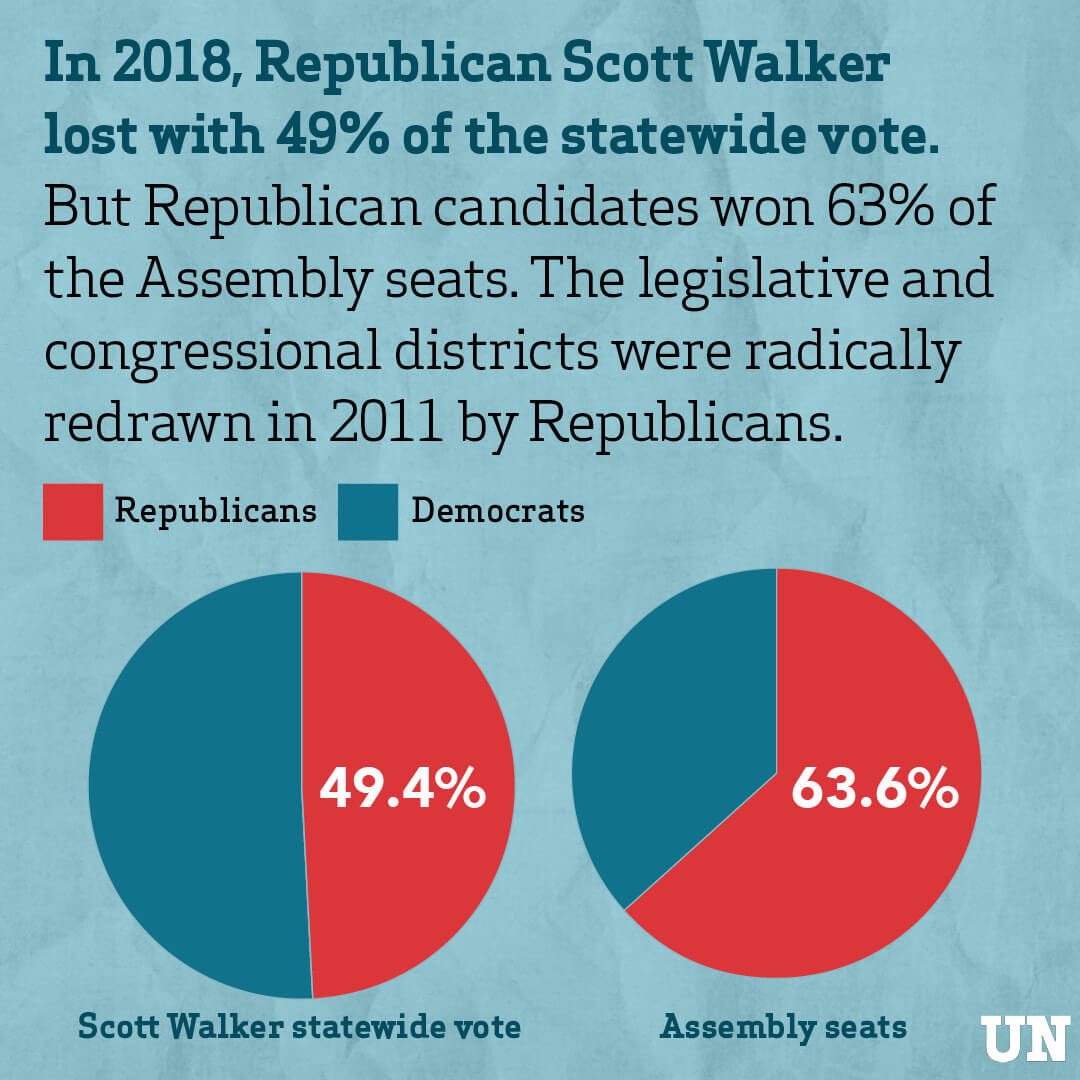
Ewert said the gerrymandered districts have resulted in poor public policy because of politicians’ failure to respond to voters’ concerns. For example, in his job as a doctor, Ewert said he sees many people struggling to pay for health care who could more readily afford it if the Republican-led Legislature would accept federal Medicaid reimbursement money.
However, legislators repeatedly have refused to do so, leaving some people unable to afford the medical care they need, Ewert said, noting that as a result of gerrymandered districts, “party allegiances take responsibility over representing the people of a district.” Wisconsin is one of only a handful of states where Republican politicians have yet to expand their Medicaid coverage with federal funding.
Many of the 21 speakers during the maps commission meeting made similar comments. They said politicians once responded to their questions and concerns but often fail to do so since districts were redrawn along partisan lines.
Lincoln County resident Vik Verna moved to Wisconsin three years ago from Texas, known for its partisan elected districts. But the advantage Republicans enjoy here because of gerrymandering pales in comparison to Wisconsin, he said.
The result, he and others said, is a Legislature of extreme positions in which little is accomplished for constituents and legislative responses to the people they represent are rare.
“We have a scorched-earth Legislature where neither side talks to each other,” Verna said.
Several speakers said they back the Iowa election maps redistricting model, reconfigured every 10 years by a nonpartisan panel. Last year bills mirroring that model were introduced in the Assembly and Senate, but they went nowhere after Republican leadership refused to take them up for debate or a vote.
Assembly Speaker Robin Vos (R-Rochester) has criticized the People’s Maps Commission as politically biased and said Republicans will design their own election map. Republican-drawn maps are likely to be vetoed by Evers, likely leaving the map issue to be decided in court.
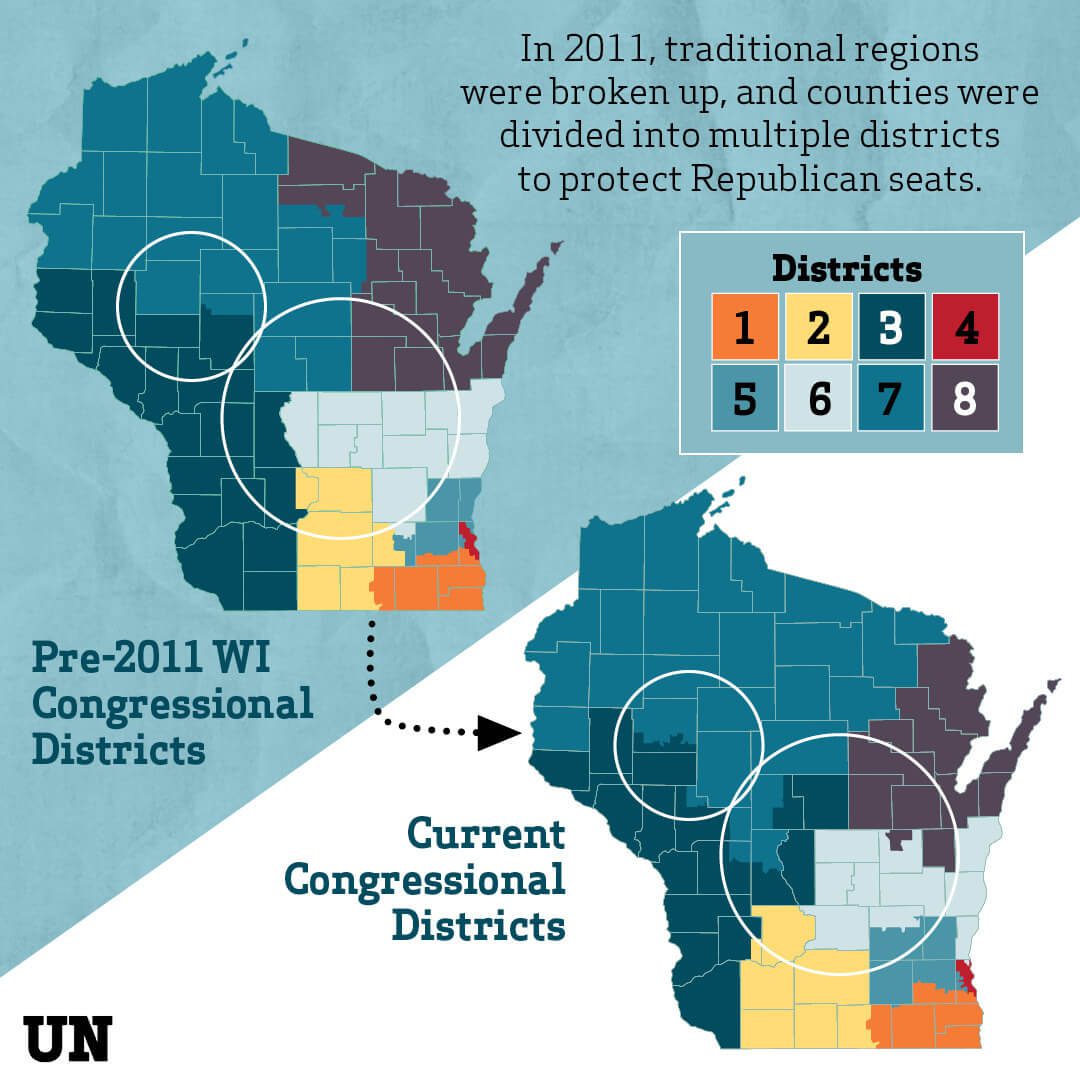
‘Not Representative Democracy’
Statewide elections in recent years, including the Nov. 3 presidential election, show that Wisconsin is nearly evenly split between Republicans and Democrats. But because of gerrymandered districts, the majority of Assembly and Senate district seats remain occupied by Republicans.
Of the Assembly’s 99 seats, 61 are held by Republicans despite 46 percent of the statewide vote on Nov. 3 going for Democratic candidates. The Senate has a 21-12 Republican majority even though 47 percent of the vote for those candidates in that election was for Democrats.
“That’s not representative democracy,” said Wausau resident Calvin Dexter. With the current gerrymandered election maps “(politicians) are more interested in partisan control than they are in good government,” he said.
Instead of following county lines and natural boundaries, current election map districts include irregular boundaries designed to maximize Republican votes. Those districts confound not only many voters but sometimes political candidates themselves, said Jenelle Ludwig Krause, who lives near Spring Valley in St. Croix County. More than once candidates who don’t live in her district have asked to have their political signs in her yard.
“There is a lot of confusion caused by the current district maps,” she said.
Regardless of political affiliation, a majority of Wisconsin voters appear to support nonpartisan election maps. A Marquette Law School Poll from one year ago shows a majority of voters favor a nonpartisan commission drawing political districts.
Similarly, residents of 54 of the state’s 72 counties have approved nonbinding resolutions supporting fair maps, and voters in 28 counties and 19 municipalities have approved referendums doing the same.
In Lincoln County, 65% of voters cast ballots for Republicans in recent elections, but residents there also supported a referendum calling for nonpartisan voting districts. The Lincoln County Board of Supervisors also has approved a resolution calling for more fair election maps.
“This issue crosses party lines,” said Hans Breitenmoser, a Lincoln County dairy farmer and a County Board supervisor who is involved with efforts to work toward fair maps. “People understand that we have a problem, and it’s time to get it fixed.”
Breitenmoser acknowledged the likelihood of a legislative impasse that winds up in court. But he said he remains hopeful that continued public discussion of the need for nonpartisan redistricting can apply pressure that can result in what he and many others view as more fair election districts.
“We’ve got the transparency and you’re seeing public input,” he said of the People’s Maps Commission process. “That is what is needed to get better maps.”
Note: The article has been corrected to reflect that Brian Ewert ran in a primary election in 2018 and not against Sean Duffy.
Politics

Biden administration bans noncompete clauses for workers
The Federal Trade Commission (FTC) voted on Tuesday to ban noncompete agreements—those pesky clauses that employers often force their workers to...
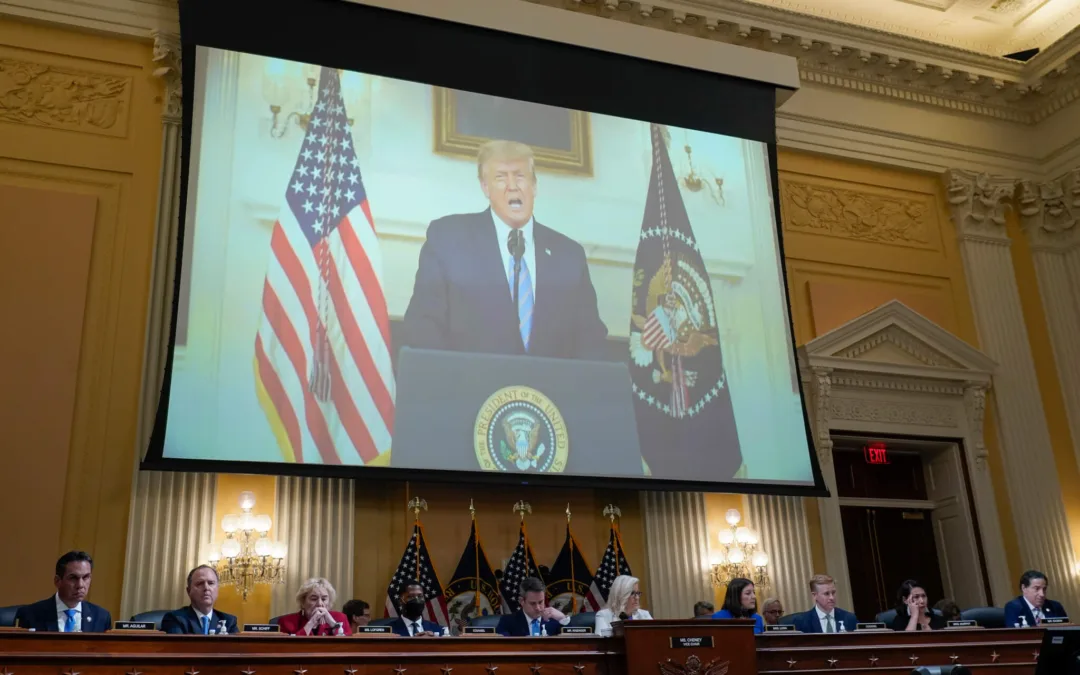
Opinion: Trump, GOP fail January 6 truth test
In this op-ed, Milwaukee resident Terry Hansen reflects on the events that took place on January 6, the response from Trump and other GOP members,...
Local News

Readers Poll: Top Bowling Alleys in Wisconsin
Looking for the best bowling in Wisconsin? Look no further! Our readers have spoken in our recent poll, and we have the inside scoop on the top...

8 Wisconsin restaurants Top Chef judges are raving about
Top Chef’s 21st season is all about Wisconsin, and on-screen, it’s already apparent that the judges feel right at home here. But, while filming in...



